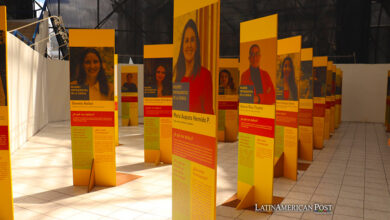Women’s Voices Highlights From the March 8th Protests Worldwide
On March 8th, women around the world commemorated the International Day of Women's Rights. Awareness of this day has increased, and more people now recognize that it is not merely a celebration of women but a day to remember the efforts of past generations to achieve greater gender equity. It serves as a platform to highlight the difficulties and disparities faced by women around the world, which must be addressed. What happened around the world during this date?

The Woman Post |Diana Sedano Valdes
Listen to this article
Read more content like this at: thewomanpost.com
The 8M saw a range of activities, including protests, marches, and events to raise awareness about women's rights and gender-based inequalities. In some countries, women used this day to reject issues such as unequal pay, lack of access to education, healthcare, and political representation, as well as gender-based violence. Some countries also marked the day with speeches by prominent women, art exhibitions, film screenings, and other cultural events. All acts of protest commemorating 8M varied depending on the context. While some women celebrated the advances in women's rights, in other countries women mourn the losses in women's rights. For example, the marches in Europe differ greatly from those in Afghanistan and Iran or those in Latin America.
Warnings on the protection of women's rights around the world
According to Human Rights Watch, there is a backlash in the protection of women’s rights with strong anti-feminist rhetoric and policies. They called on governments to reinforce measures to protect women and girls. Some of the worst cases of constant and increased threats include Afghanistan, with the Taliban banning c and rights. Regarding this panorama, UN Women states that gender disparities are worsening and gender equality would not be achieved for 300 years, given the current pace of change.
In Latin America
Large-scale demonstrations erupted across major cities, including Mexico City, Bogota, Santiago de Chile, and Buenos Aires. Protesters focused on a range of issues, including reproductive rights and the high rates of femicide. In Peru, women added their voices to the growing chorus of dissent against the government of Gina Boluarte and her cabinet – in recent days, the Minister of Education made derogatory remarks likening protesting women to animals, further fuelling tensions-. The protests drew thousands of participants, including indigenous people, students, and workers. Clashes with police were reported primarily in Mexico, where tensions ran high.
In Europe
The main 8M demonstrations took place in Paris, Madrid, Berlin, and London, where women demanded better salaries and pensions, among other things. They also protested for the rights of women in Afghanistan, Iran, and Pakistan. In several countries, groups of women gathered in front of these embassies to make their voices heard.
In the MENA region
Women across the Middle East and North Africa took to the streets to protest and demand their rights. In countries such as Iran and Saudi Arabia, women challenged oppressive laws and policies that restrict their freedoms and limit their opportunities. In Tunisia and Lebanon, women's rights advocates called for greater legal protections against domestic violence and discrimination. In Iraq and Syria, women demanded an end to the conflicts that have ravaged their countries and the establishment of more inclusive and representative governments.
In Asia
In India, women protested violence, discrimination, and inequality, highlighting the need for greater legal protections and social change. In Pakistan, women called for an end to gender-based violence and demanded greater access to education and economic opportunities. Meanwhile, in Bangladesh, women's rights advocates demanded better working conditions and an end to workplace harassment. In the Philippines, women protested the government's failure to address issues such as poverty, healthcare, and reproductive rights. These protests demonstrate the unwavering determination of women in Asia to fight for their rights and push for greater gender equality, despite facing significant challenges and obstacles. In Japan, women demonstrated against workplace discrimination and sexual harassment, as well as the government's failure to address gender-based violence. In South Korea, women marched to demand greater gender equality and to protest deep-seated patriarchal attitudes. In China, women's rights advocates called for an end to gender-based violence and discrimination, and for greater access to education and employment opportunities. In Russia, women protested against the government's crackdown on civil society and political dissent, as well as the country's high rates of domestic violence.
As seen, feminist collectives are the strongest actors in commemorating International Women's Day and participating in demonstrations to demand the guarantee of their rights. Unfortunately, stereotypes about feminism have arisen during this day, leading, in some cases, to violent acts against feminists. These stereotypes portray feminists as radical women who hate men and expect special treatment because they are women. The term "feminazi" is a derogatory and incorrect concept that has been appropriated by conservative and misogynistic individuals to attack and devalue women who demand freedom and rights. It's important to note that feminism does not promote misandry (hatred, dislike, or mistrust of men); feminism aims to deconstruct gender patriarchal roles and promote gender equality, caring about men as it rejects the idea of subservient genders. Comparing feminism to extreme right-wing political ideologies that support racism, anti-Semitism, segregation, and extermination is not only inaccurate but also dangerous for our society. Women who demand their rights and reparation from patriarchal, misogynistic, and macho conduct and believe that race, class, and sexual orientation permeate gender roles are not the same as an extreme right political ideology. It's crucial to acknowledge the fundamental differences between these social phenomena and to understand the complexity of gender-related issues.




